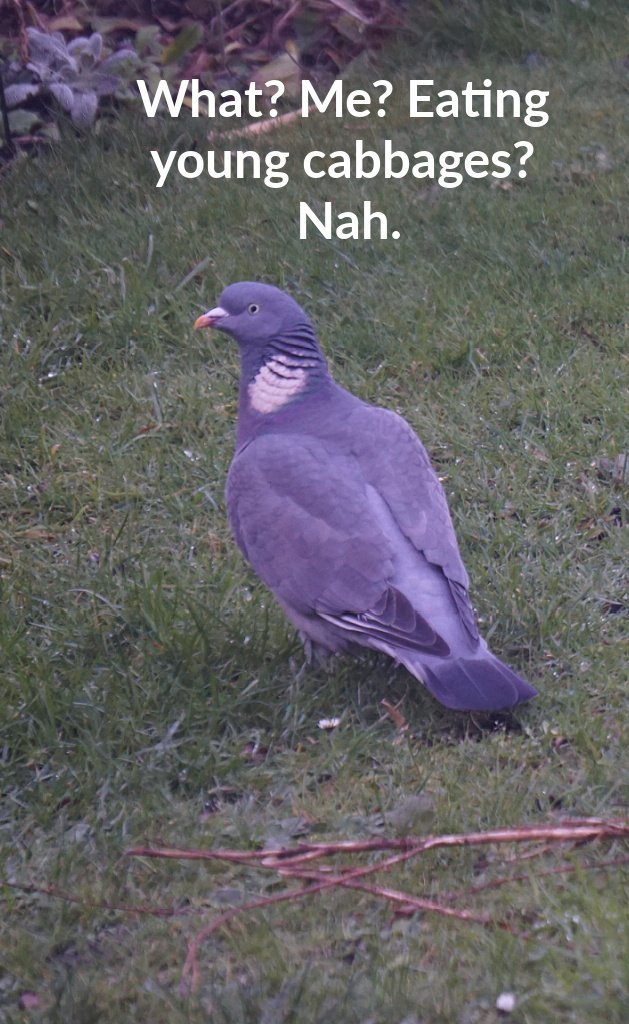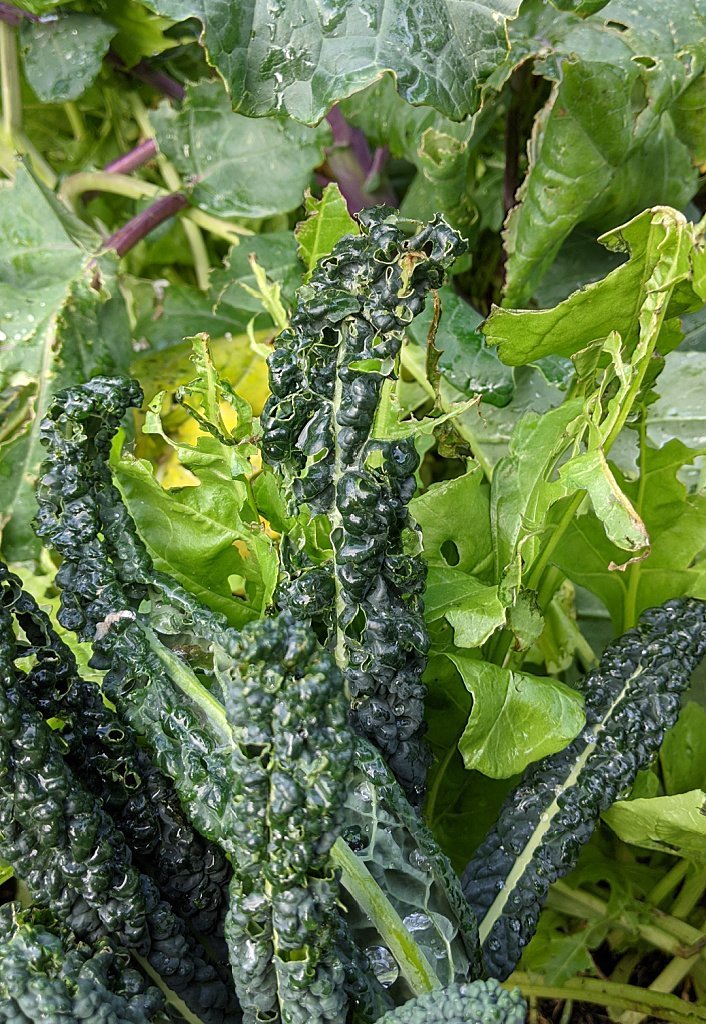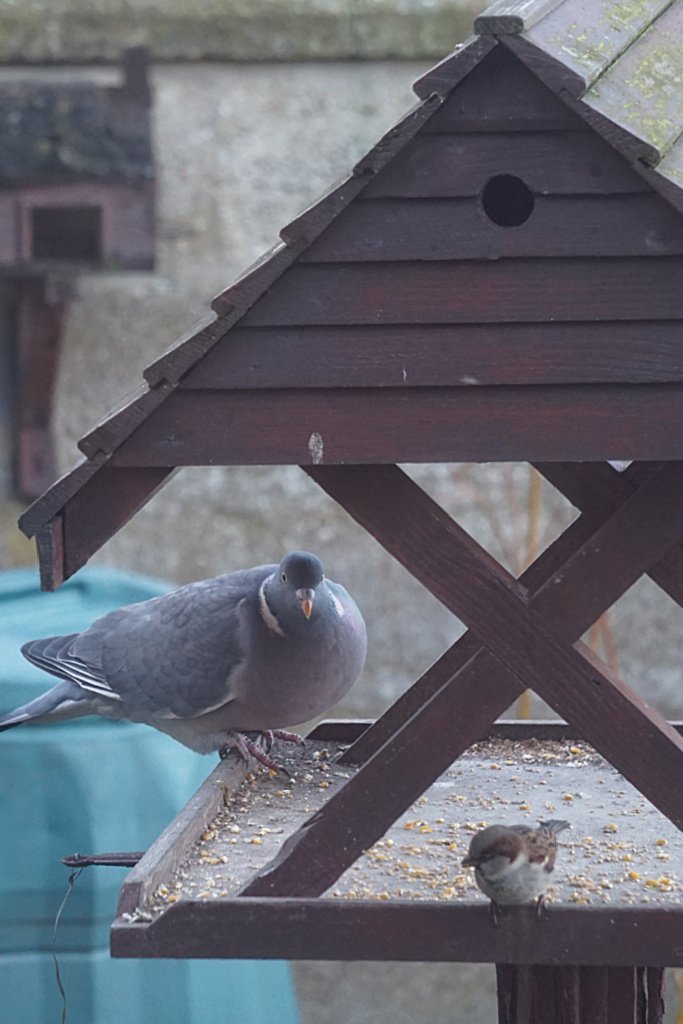Scotland’s Worst Garden Pest
Do you have a wood pigeon in the garden? How things have changed. Once upon a time there was a grey doo that kept itself to itself. This pigeon lived in the forest and nibbled harmlessly on acorns, beech-mast, weed seeds and so on. It was quite an agreeable existence.
There were of course the anxieties about female sparrowhawks – and goshawks too, even bigger and more threatening. But overall, it was a quiet life in the wildwood.
Then, the forest was cut down in many places, for fields and farming. After that, about two hundred years ago, came the improvements in farming methods. Farmers started growing neeps and under-sowing clover with their grain crops.
All this stuff which stayed green through the winter meant there was a much better food supply to see the doo through the hard season. No more wee berries and weed seeds for him.

‘Look at that food’ he said and came out of woods to live on the farmlands.
Even more recently, the agricultural trend towards oilseed rape and winter-sown cereal, has made life even easier for our pigeon friends in the winter.
The wood pigeon – it’s all over the place!
Now there are, according to some estimates, well over ten million cushie doos, or wood pigeons, if you must, in the Untied Kingdom.
They are in towns as well as out in the fields. In fact, there has been a 200+% increase in doos in urban and suburban habitats since 1995, according to British Trust for Ornithology researchers.
Worse (in a way) the Royal Society for the Protection of Birds’ Big Garden Watch results for 2022 show it the fourth-commonest bird seen in the average garden – a rise of an astonishing 1133% since 1979! Eeek.
Country gardeners know them well, but these days even the cultivators of inner city plots are familiar with that crash and flap of grey wings as they are disturbed amongst the brassicas.
Make no mistake, the extremely common woodpigeon in the garden deserves its title of the worst bird pest in Britain.
It’s a sizeable bird, with conspicuous white wing flashes and some white markings on its neck, altogether more solid looking than your average town doo (descendants of rock doves from coastal caves).
Wood pigeon in the garden alert!
Nothing tastes sweeter to a cushie doo than the young shoots of the brassica tribe. Cabbages, sprouts, kail, broccoli – it’s all the same to this voracious feeder.

Pigeon damage is easy to tell, say, from slug, snail or caterpillar. No slimy trails for a start and the remains of the stripped off leaves have a characteristic snipped look about them.
At least, that’s what my row of young kail plants looked like.
The really annoying thing is I can’t say I actually saw the doos in amongst the plants. These were definitely dawn raiders. However, to add insult to injury, a pair started cooing and hanging around the honeysuckle that festoons an arch.
Next thing, this shambolic collection of twigs appeared, perilously perched on a supporting strut in the arch. That’s what they called a nest. It wasn’t going to win any design awards.
Now, this home-making pair certainly did not lack boldness. The nest was head-high. The path below the arch lead straight to the greenhouse, so was in daily use.
A garden-nesting wood pigeon – what next?
Nevertheless Mrs(?) Doo produced a couple of eggs – white, glossy, no-nonsense eggs – and sat tight, looking me straight in the eye as I passed. I could have reached out and touched her. I was weasel-danced into inactivity by the sheer boldness, and curious about exactly how brazen they could be.
The call of the common wood pigeon
Ah, the soothing (grrr) call of the doo. As you probably know if you have any cover at all in your own plot, the bird goes something like koo-roo-koo-roo-KUK. Well, that’s what it sounds like to me. The oddest bit is the way it stops as if in mid-syllable right at the end of its song.
It’s as if it has just remembered that it has some important pigeony task it has forgotten to finish…
Anyway, things did not end so well though for our over-friendly doo. Or perhaps they did, from a brassica point of view. I think the neighbour’s cat (usually my sworn enemy) put an end to the domesticity, and the birds moved on.
Actually, they only moved on as far as the apex of the neighbour’s roof. (Koo-roo, koo-roo etc.)
The nest was torn down by some predator. Wait, come to think of it, we also had a nearby carrion crow of growing boldness, so maybe it’s just my preference to blame the pernicious pussy-cat.

I once lived on the edge of open country, with a thick hedge and conifers, and there were wood pigeons around in plenty.
Wood pigeons – what a racket
Back then, I couldn’t even go into the orchard without a doo or two clattering out of the branches and frightening the life out of me. (Why do they have to be so noisy?)
So I learned to take some elementary precautions. Wood pigeons in the garden back then were wary and didn’t like to walk in or walk under things to reach their chosen food.
They preferred open ground all round, so that strategically placed obstacles like branches can put them off. Or, at least, these tactics used to work.
I reckon the new breed of townie wood pigeons are actually quite tame – certainly that pair on the arch were. These urban generations are now quite accustomed to the fairly enclosed spaces of gardens.
A gallus doo
While I was filling the kettle the other day, I looked out from the kitchen window and came beak to beak with our wood pigeon – on the coal-bunker by the window-sill, if you please. He said he was just wondering when the next scattering of high-quality, high-energy nuts and seeds for birds was taking place…you know, in the sacks my wife enjoys buying. (She thoroughly recommends no-mess Peckish Complete, by the way.)

A race of super-pigeons?
In short, while their country cousins are still wary birds, ready to take flight as soon as you enter the field in which they are feeding, these townies have been hanging about with the streetwise local pigeons for generations now and have learned a trick or two.
Especially about getting round soft-hearted wives. And ignoring dangling CDs on threads, strategically placed twigs and those ridiculous cut-out cat-shapes with the shiny eyes.
Also, living so close to a town they know they are safe from the farmer’s gun.
Maybe I’m just feeling persecuted, but I’m beginning to think that a race of super-doos is poised in the hedge just waiting for the next batch of hardened-off broccoli to be planted out.
For the moment, I’ve laid one of those fleeces out until I get some more sticks and branches. (It’s pathetic really…) I’ve also been looking at recipes whose ingredients include pigeon, cream and a brandy sauce.
If I can’t get the vegetables off the plot, I’ll try for the meat…though somehow I can’t see that happening.
Now read about horsetails – Scotland’s wickedest weed – and get even more discouraged. (OK, only kidding…)
